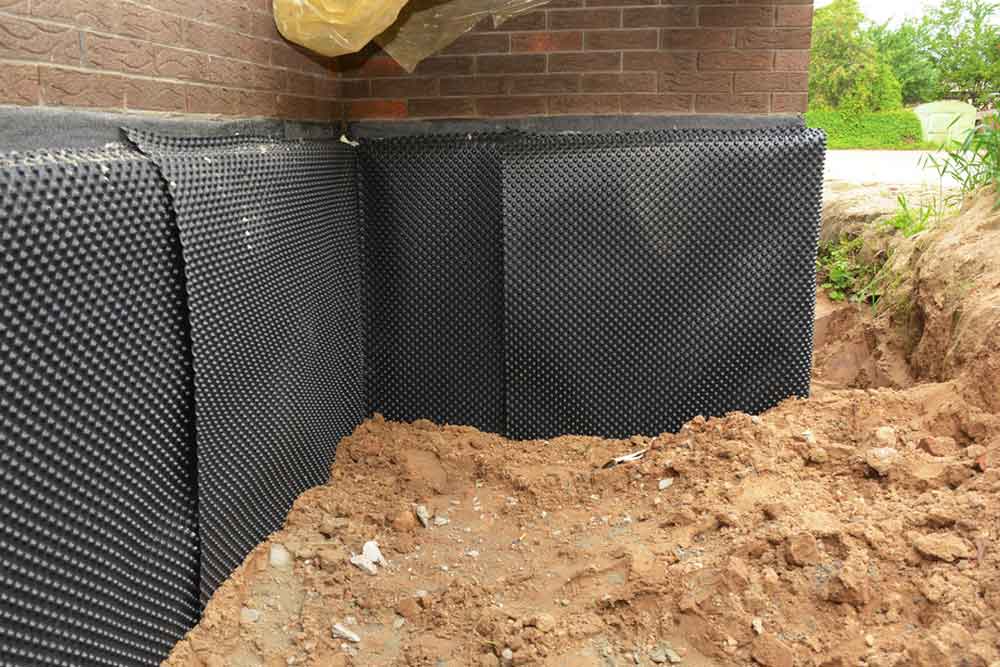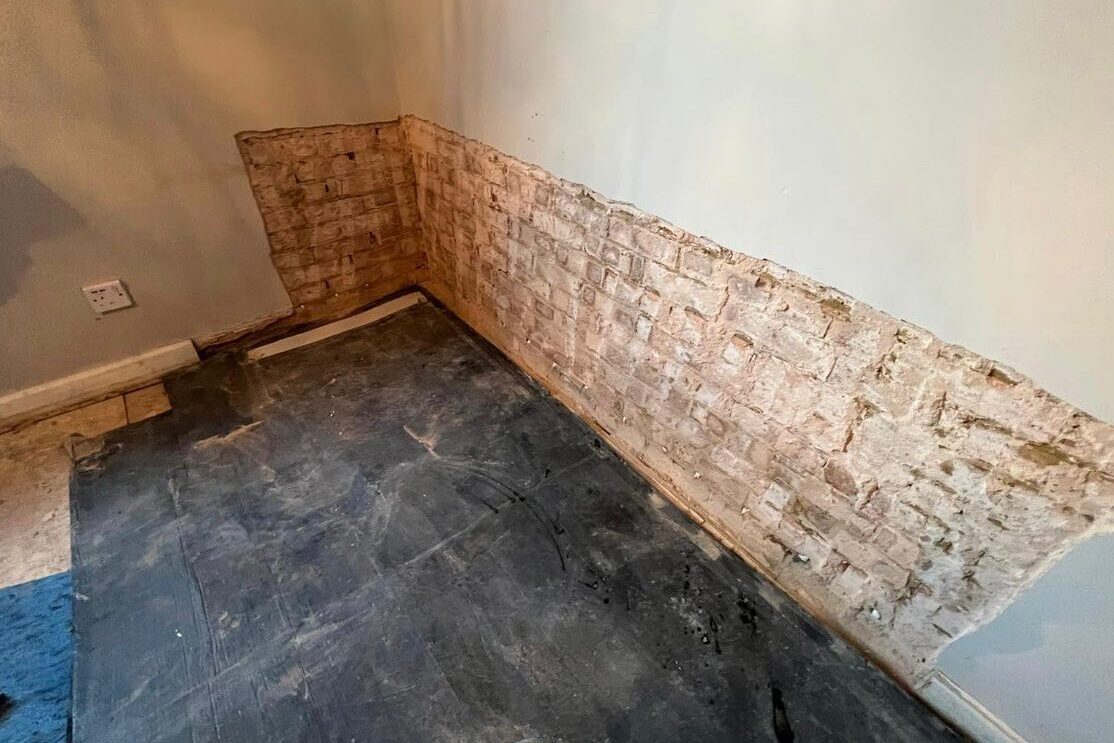Why investing in hiring a mould treatment newcastle professional
Why investing in hiring a mould treatment newcastle professional
Blog Article
Exploring the Various Strategies and Solutions for Effective Damp Proofing
Dampness in structures postures significant obstacles to both structural honesty and indoor air top quality. Various strategies and services have actually emerged to fight this pervasive concern. From standard damp-proof membrane layers to cutting-edge chemical treatments, each technique provides special benefits. Recognizing these alternatives is necessary for reliable dampness control. Nonetheless, selecting the ideal remedy depends on certain structure conditions and needs, motivating further expedition right into one of the most effective moist proofing techniques offered.
Understanding the Sources Of Dampness
Although wetness can develop from numerous sources, comprehending these reasons is important for reliable removal. Typically, dampness originates from 3 key sources: increasing damp, penetrating wet, and condensation. Rising wet happens when groundwater takes a trip upwards via porous materials, such as block or stone, usually because of a lack of an efficient obstacle (damp specialist newcastle). Passing through moist is normally brought on by external elements, including roofing system leakages, malfunctioning gutters, or harmed walls, allowing water to infiltrate a property. Condensation, on the other hand, arises from excess moisture airborne, often intensified by bad ventilation and temperature level differences, resulting in water beads basing on surface areas. Identifying these underlying issues is crucial, as each sort of moisture calls for a tailored technique for removal. Proper evaluation helps in determining one of the most reliable solutions, ultimately safeguarding the structural honesty of a structure and boosting indoor air top quality
Typical Damp-Proof Membranes

Chemical Damp-Proofing Solutions
Chemical damp-proofing solutions provide an innovative approach to preventing moisture invasion in structures. These approaches typically entail the application of liquid chemicals that permeate masonry and form a barrier versus rising moist. Typically utilized chemicals consist of silanes, siloxanes, and various other water-repellent representatives that respond with surface products to produce a hydrophobic layer.The application process typically needs drilling openings right into the wall surfaces, infusing the chemical remedy, and allowing it to cure. This method is particularly useful for older frameworks where standard damp-proof membranes may be unwise. Chemical damp-proofing can be much less turbulent and more economical than extensive remodelling projects.While reliable, these services depend on appropriate application and environmental problems for peak efficiency. damp removal newcastle. Routine upkeep and surveillance are vital to assure the durability of the damp-proofing treatment. Overall, chemical damp-proofing represents a versatile alternative for protecting structures versus moisture-related damages
Tooth Cavity Wall Building Methods
Dental caries wall surface building methods supply many benefits, especially in dampness control and power efficiency. By including an air gap in between 2 layers of masonry, these walls efficiently minimize water access while improving insulation. This combination not just secures frameworks from dampness however likewise adds to reduced energy consumption.
Advantages of Cavity Walls
When considering reliable moist proofing methods, the advantages of cavity walls stick out prominently. Tooth cavity wall surfaces are composed of two separate layers, producing an air void that effectively lowers wetness infiltration. This layout decreases the threat of moisture, as the outer wall surface serves as an obstacle against rain and water access. In addition, dental caries walls enhance thermal insulation, which adds to power efficiency by reducing heat loss. They likewise give audio insulation, helping to develop a quieter indoor environment. The air void allows for air flow, which assists in wetness control and minimizes the possibility of mold and mildew development. These benefits not just improve the overall comfort of a building however additionally add to its longevity and structural stability.
Dampness Control Approaches
Effective moisture control approaches are critical in tooth cavity wall building and construction to assure long-term defense versus dampness. One key method includes the incorporation of weep holes, which facilitate water drainage from the dental caries, preventing build-up. In addition, the use of breathable membrane layers can help take care of wetness levels while enabling trapped vapor to escape. Proper positioning of insulation is additionally crucial, as it needs to not obstruct drain courses. Making certain that the outer leaves of the dental caries wall are built with water-resistant products improves total resilience. Normal maintenance checks are vital to determine any blockages or damage early, securing the framework's integrity. Eventually, a mix of these strategies forms a robust defense versus moisture breach in cavity wall surfaces.
Insulation and Energy Effectiveness
Insulation plays an important duty in improving power effectiveness get more info within cavity wall surface construction. By including insulating materials, these walls develop a thermal obstacle that reduces warm loss and minimizes power usage. Efficient insulation not just assists keep a stable indoor temperature but additionally minimizes the threat of wetness, as it stops condensation within the wall cavity. Numerous methods, such as making use of rigid foam boards or mineral woollen, can be utilized to accomplish optimal insulation performance. Additionally, correct installation is crucial to ensure that gaps and voids are reduced, which can or else jeopardize power performance. Eventually, a well-insulated tooth cavity wall surface contributes considerably to total sustainability and lowers heating & cooling expenses for homeowners.
Outside Damp Proofing Techniques
Outside wet proofing approaches are important for shielding frameworks from wetness seepage. 2 efficient strategies include the application of waterproof membranes and the installment of French drains pipes. These options aid minimize water buildup and maintain the stability of buildings.
Waterproof Membrane Layer Application
While various approaches exist for preventing dampness ingress, the application of waterproof membrane layers continues to be a very reliable external damp proofing method. These membranes are usually made from materials such as polyethylene, rubber, or modified bitumen, offering a durable obstacle against water infiltration. The installation procedure involves applying the membrane layer to the exterior surface areas of walls or foundations, guaranteeing complete insurance coverage to stop leakages. Proper bond and securing at joints are vital to making the most of efficiency. Water resistant membrane layers can be used in numerous kinds, consisting of liquid layers and sheet membrane layers, enabling flexibility based on the specific requirements of the structure. This technique not only safeguards buildings from moisture however also enhances their longevity and structural integrity.
French Drain Setup
One efficient technique for handling groundwater and protecting against wetness build-up around a building's structure is the setup of a French drain. This drain system contains a trench loaded with gravel and a perforated pipeline that reroutes surface area water away from the foundation. Appropriate installation needs cautious planning, making sure that the drain slopes away from the structure to promote suitable water circulation. In addition, the area of the drainpipe is important; it should be placed in locations vulnerable to merging or excess dampness. Normal upkeep, including clearing up debris from the crushed rock and making certain the pipe remains unhampered, is important for long-lasting efficiency. Eventually, a well-installed French drainpipe can considerably decrease the risk of water-related issues in basements and foundations.
Interior Waterproofing Approaches
Inside waterproofing methods are crucial for shielding a building's inside from wetness seepage and potential water damages. These approaches generally entail the application of customized materials and methods made to produce a wetness barrier within the structure. One typical approach is using waterproof finishings or sealers on wall surfaces and floors, which prevent dampness from permeating surfaces.Additionally, setting up indoor drain systems, such as sump pumps, can properly handle water buildup in cellars and creep rooms. Another technique entails using vapor barriers, which are mounted to hinder moisture activity from the ground right into living spaces.Moreover, addressing any type of splits or gaps in wall surfaces or foundations with proper sealers assures an extensive defense versus water invasion. By implementing these indoor waterproofing strategies, homeowner can greatly decrease the danger of mold growth, architectural damage, and other moisture-related concerns. Correct execution of these strategies is necessary for long-lasting protection and building integrity.
Regular Upkeep and Assessment Practices
Normal upkeep and assessment methods are essential for ensuring the lasting efficiency of moist proofing options in any type of building. Routine checks allow residential or commercial property owners to recognize early indications of dampness invasion, such as peeling paint, mold development, and moldy odors. These indicators can signify underlying problems that need instant attention.Inspections need to be carried out at least annually, concentrating on at risk locations like basements, crawl spaces, and outside wall surfaces. During these assessments, building proprietors must analyze sealants, drainage systems, and air flow to validate they function correctly.Additionally, maintaining gutters and downspouts is necessary, as blocked systems can bring about water buildup near the structure. Applying a normal maintenance timetable, along with timely repair work, can considerably extend the life-span of wet proofing steps and shield the structural stability of the building. Aggressive steps inevitably add to the total health and wellness of the living environment.
Frequently Asked Concerns
For How Long Does Damp Proofing Usually Last?
The duration of damp proofing efficiency varies, usually lasting in between 20 to half a century. Factors such as application top quality, ecological conditions, and maintenance techniques substantially affect the longevity of the moist proofing therapy.

Can I Damp Proof My Home Myself?
The private considered the feasibility of DIY damp proofing. With appropriate research study and the best products, it is feasible. They additionally recognized the importance of expert assistance to guarantee lasting performance and stop future concerns.
What Are the Signs of Inefficient Damp Proofing?
Indications of inadequate moist proofing include consistent mildewy smells, visible mold development, peeling paint, wet spots on walls, and timber degeneration - mould treatment newcastle. House owners must resolve these problems quickly to avoid further damage and wellness worries
Does Damp Proofing Affect Indoor Air High Quality?

Just How Much Does Expert Damp Proofing Cost?
Professional wet proofing expenses differ substantially, generally ranging from $1,000 to $5,000 depending upon the building's size, the level of the damp problem, and picked techniques. Each circumstance requires a tailored analysis for accurate prices. Frequently, moisture stems from three main resources: climbing damp, permeating wet, and condensation. When thinking about reliable damp proofing techniques, the benefits of dental caries wall surfaces stand out plainly. Exterior damp proofing techniques are crucial for protecting structures from dampness seepage. While different approaches exist for avoiding moisture access, the application of waterproof membrane layers remains a very efficient external moist proofing technique. Indications of inefficient damp proofing include consistent musty odors, visible mold and mildew growth, peeling off paint, damp patches on wall surfaces, and wood degeneration.
Report this page